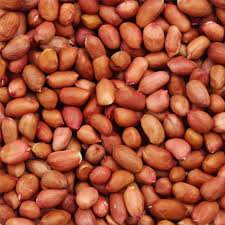General Information
Cashew is an evergreen tree with deep tap roots, grown for its edible fruits (nuts). The cashew tree has a branching main trunk and characteristic domed crown. The thin foliage of the tree is limited to the ends of the branches and is made up of oval-oblong leathery, shiny dark green leaves.
The leaves are smooth with pronounced veins and midrib and possess petioles that are swollen at their base. The tree produces numerous pinkish-white flowers on drooping panicles and a kidney-shaped true fruit (nut) which is approximately 3 cm (1.2 in) long with a grey-brown shell and develops from a fleshy accessory fruit, sometimes referred to as the ‘cashew apple’. The cashew apple is pear-shaped and red to yellow.
Cashew trees can reach a height of 12 m (39.4 ft) and have an economic lifespan of 25 years after which time they are replaced in commercial plantations.
Cashew originates from Brazil. The Portuguese introduced cashew to Mozambique in the 16th century where it flourished, forming extensive forests; eventually, it also became dispersed in East Africa along the coastal plains of Kenya and Tanzania.
Climate Conditions, Soil, and Water Management
Cashew trees are usually grown at altitudes of between 0-500 m above sea level (asl) but can grow up to 1000 m asl. They can be very drought resistant provided their roots penetrate deeply into the soil and draw water from the subsoil. For mature trees 500 mm of rainfall per year is adequate, but seedlings should be watered until properly established. If rainfall is below 900 mm per year plant at the widest spacing indicated. Cashew nut trees tolerate a wide range of soils provided they are deep and well-drained. They can grow quite well on infertile soils but do not do well on coral outcrops at the coast.
Uses
The kernels or nuts have a high nutritional as well as commercial value and are used for human consumption either raw or roasted. The cashew nut apple is rich in Vitamin C (about 5 times higher than the orange) and is used for the production of juice, wines, spirits, jam, pickles, and chutneys. The liquid of the shell is used for brake linings, heatproof and waterproof paints, and protective varnishes. Cashew nut wood is of poor quality but can be used as firewood if mixed with other types of wood.



Reviews
There are no reviews yet.